Quick search
CTRL+K
Quick search
CTRL+K

Bristol has been one of England’s economically and culturally leading cities over the last many centuries and it hosts a number of interesting sights. Not least, the trade along the river has made its mark since industrialization, and the artificially created river port now forms an environment for many cultural activities, promenades and simply boasts a nice atmosphere.
There are several museums in the city. Among them is the great ship SS Great Britain, which was the world’s largest when constructed in 1843. You can also get the story of the English colonial history in the city, which also offers art, entertainment and really good shopping.
Bristol’s location on the River Avon is stunningly beautiful. Immediately west of the city core, the rocks rise majestically at the banks of the river in Avon Gorge, which is one of the area’s unforgettable scenic places. Here you can enjoy the view or start a tour through the western part of Bristol, which offers Victorian architecture and other things worth seeing.
The city is also the gateway to wonderful trips into south west England. You can easily reach the towns of Bath and Wells. Bath’s hot springs attract many tourists and it can be a stop on the way to Stonehenge. And in less than an hour you can reach the Welsh capital of Cardiff in the other direction.
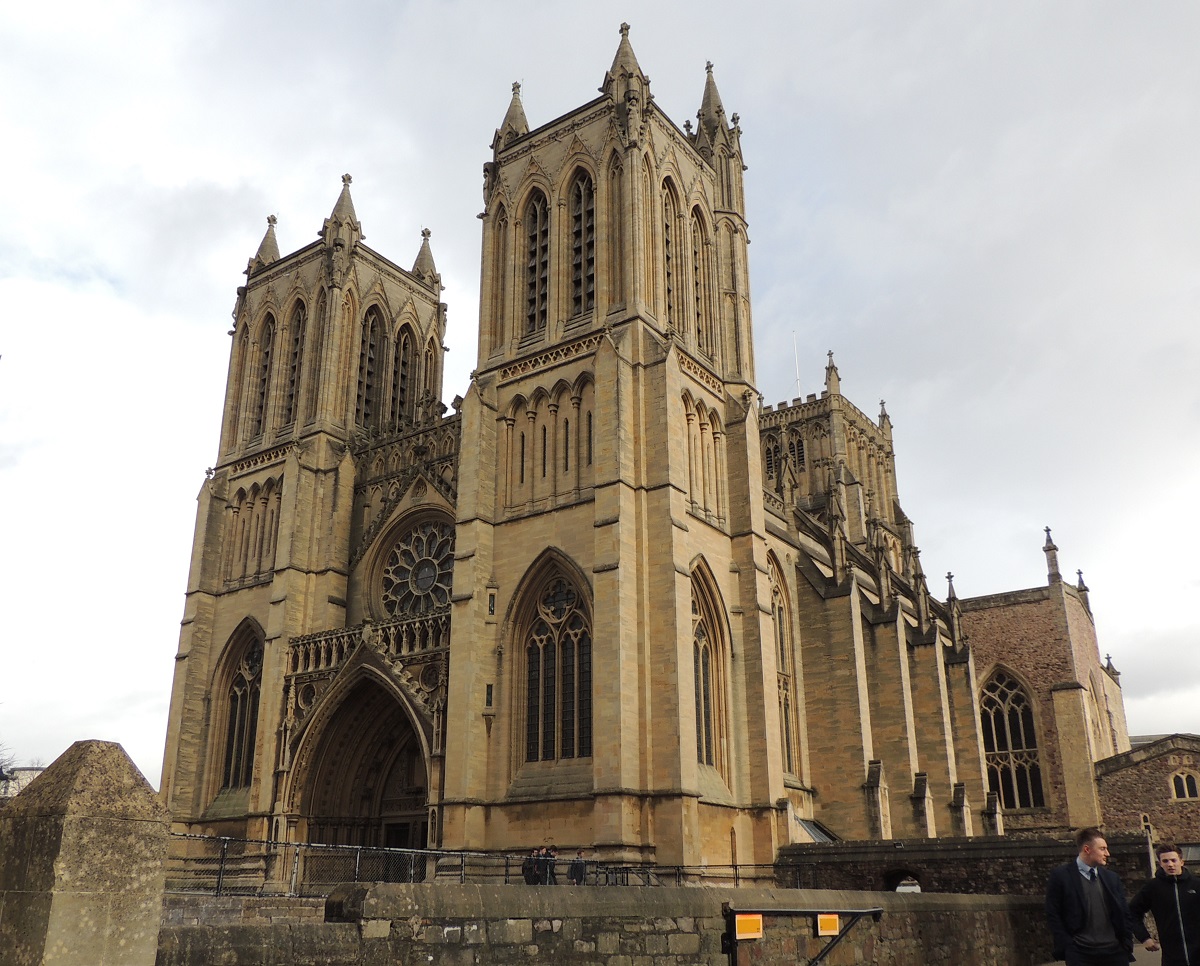
The cathedral in Bristol, whose name is actually the Cathedral Church of the Holy and Undivided Trinity, was founded in 1140 and built 1140-1148. Originally, the church was a Romanesque-style monastery church, and it was expanded with outbuildings in the decades after construction. The old church has not been preserved, but of the former buildings a beautiful gate building has been preserved; it is the Great Gatehouse.
Other buildings and actual remodeling followed. Around 1220 the Elder Lady Chapel was built, and in the years 1298-1332 the eastern part of the building was rebuilt in the English Gothic style. For the rest of the 15th and 16th centuries, expansion continued with, for example, the church’s central tower. In 1542, Bristol Cathedral was elevated to a cathedral by King Henry VIII. It happened in connection with the establishment of the diocese of Bristol. During the last half of the 19th century, the cathedral took on its current appearance. In the Neo-Gothic period, the building was re-inaugurated in 1877, but the western facade with the two towers was not completed until 1888.
Inside, Bristol Cathedral is atypical of English church buildings in being a nave church, where the aisles are the same height as the nave. The light comes from relatively large windows in the side naves, and it gives a light and airy impression. The organ dates from 1685, but it has been rebuilt several times, most recently in 1907. And then there are a number of monuments in the building, where in the Berkeley Chapel you can see a 15th-century candelabra that previously stood in the city’s Crusader church; Temple Church.
The Floating Harbor is one of the lovely sights in Bristol, with parts of the city center lining the harbour. These are areas that have today been developed into atmospheric promenades with a number of options for entertainment. You can take a hike or sail around between the various sights along the banks.
There has been a port in the city since the 13th century, but the current city port was not established until the beginning of the 19th century. The river Avon is characterized by tides at the site, and therefore locks and a bypass channel were built, which could keep a constant water level in the harbour. That is precisely why it was nicknamed Floating Harbour. Today, the city’s industrial port is located in the town of Avonmouth at the mouth of the Avon, and therefore the busy and important historic port has been opened to citizens and tourists.
The Floating Harbor was established and excavated in order to maintain ship traffic in competition with other cities such as Liverpool, whose location by the sea provided natural access for the increasingly large ships of the time. The Floating Harbor starts in the west with locks towards the Cumberland Basin, which with two accesses to the River Avon was flexible for the large traffic that was to and from the port of Bristol. From Cumberland Basin there were locks again to the east, where the whole of Bristol’s elongated Floating Harbor lies. After construction began in 1804, the Floating Harbor was inaugurated in 1809.
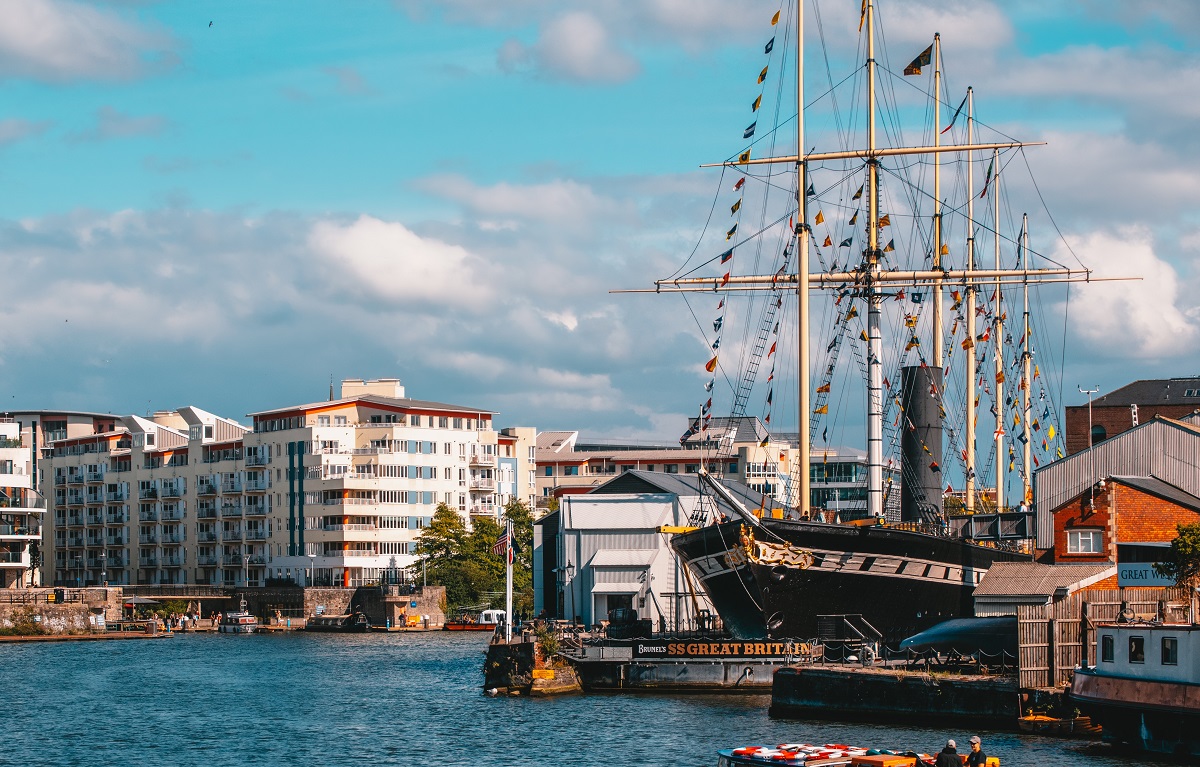
SS Great Britain is an 1843 ship on display in a dock in the Floating Harbour, Bristol’s old industrial port. When it was built, the ship was clearly the largest in the world, and it was the first vessel with an iron hull and propellers. It had the capacity to sail with 360 passengers, a number that was later increased to 730 through extension with a new floor.
The SS Great Britain was built in a dock in Bristol’s Floating Harbour, and for over a year after launching it could not pass the locks to get out of the city to the sea it was built for. Only during extremely high tides in the River Avon and a partial removal of the locks out of the Cumberland Basin did it succeed in getting the ship out onto the world’s oceans.
The maiden voyage went to New York in 1845 and the trip took 14 days. Later, the SS Great Britain was fitted out as an emigrant ship, and it primarily sailed between England and Australia. In 1886, the ship became unseaworthy after a fire that occurred in the Falkland Islands. Instead, it became a permanent coal warehouse until the 1930s. In 1970 the SS Great Britain was refloated with pontoons and towed back to Bristol where it now rests exactly where it was once built.
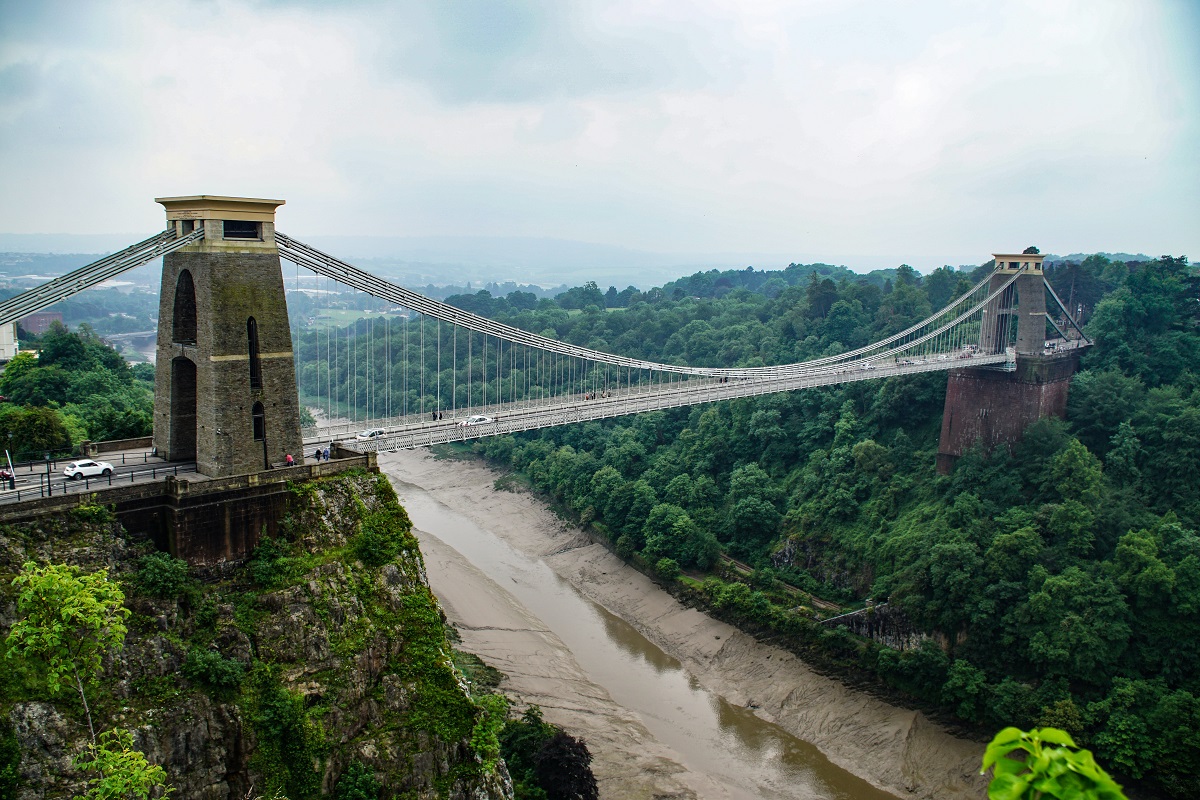
Clifton Suspension Bridge is a suspension bridge that was built over the River Avon and the very beautiful Avon Gorge. The bridge with its surroundings is like taken from an exotic place and is a landmark of Bristol and a must see during a visit to the city.
As early as 1753, an idea arose to build a bridge on the site. Money was set aside for the purpose, and when the interest had reached a certain amount, the bridge had to be built, but still other financing was also needed. After a competition in 1829, the foundation stone for the new bridge was laid in 1831. After many construction stops and financial difficulties, the bridge was completed in 1864. The span of the bridge is 214 meters, the height of the towers is 26 meters above street level, and the clearance under the bridge is 75 meters .
A special event occurred in 2003 when the last flight of the supersonic Concorde was made over the Clifton Suspension Bridge to land at the nearby airport, Filton Airfield.
The Exchange was built 1741-1743 by John Wood the Elder as the Bristol Stock Exchange. His stock exchange building is the only one preserved in England from the 18th century, and it stands out beautifully in the cityscape with Corinthian columns on the imposing facade.
Behind the facade there was originally an inner courtyard surrounded by a colonnade. During a major rebuild in 1872, the farm was roofed, and several changes took place throughout the 20th century. However, the facade facing Corn Street remains largely as it was in the 18th century.
The place was called the Corn Exchange, but the exchange was open to all traders. The decoration of the building included symbols of the world’s continents and thereby some of the goods that were traded in Bristol. Outside the building stands a kind of bronze tables called nails. These tables are from the 1500s and 1700s and acted as trading posts for merchants. The tables have raised edges so that coins do not fall down.
A detail at The Exchange is the building’s clock, which was installed in 1822. The clock has two large hands, which is because both Bristol and London time had to be displayed. This was before the introduction of a standardized time. Time came with the railway, and Bristol changed to the so-called Railway Time in 1852, whereby there was no longer a difference between the time in Bristol and in London.
Today, both in Børsen and in the buildings and passageways behind it, you can go exploring in the exciting St Nicholas Market.
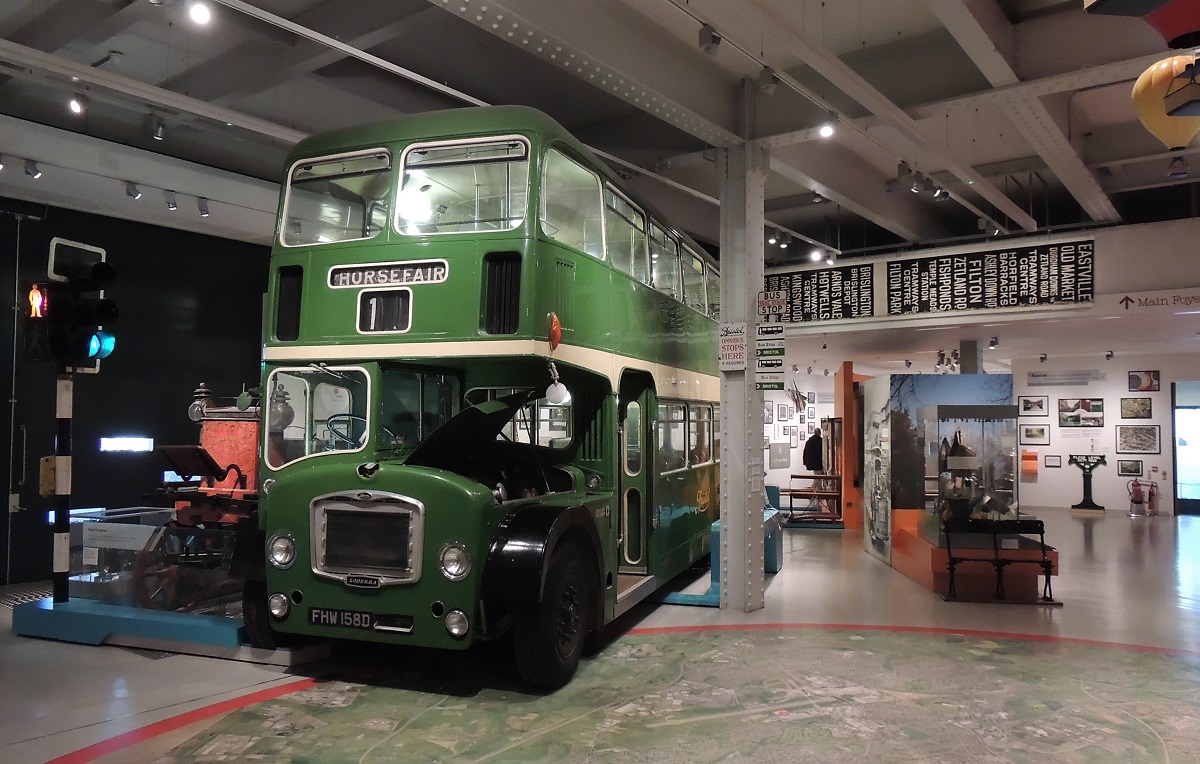
M Shed is the name of one of the museums that make up Bristol City Museum. The name M Shed comes from the way the city’s harbor buildings were named when the harbor was an active industrial port, and M Shed was thus the name of the building in which the museum has now been housed.
In the past, the Bristol Industrial Museum was located on this site, where part of the city’s history is conveyed. It is not least about a part of the maritime past with active industry, slave trade and other things that stimulated Bristol’s and England’s growth. In terms of buildings, the museum offers a preserved dock environment with, for example, a harbor railway and an old steam-powered crane from 1878. The crane is the only preserved steam crane according to the design and patent of inventor Sir William Fairbairn from 1850. The crane was in use until 1973.
In the museum itself, there are three primary exhibitions, each of which focuses on parts of Bristol’s history and cultural life in their own way. These are the themes of Bristol Life, Bristol People and Bristol Places.
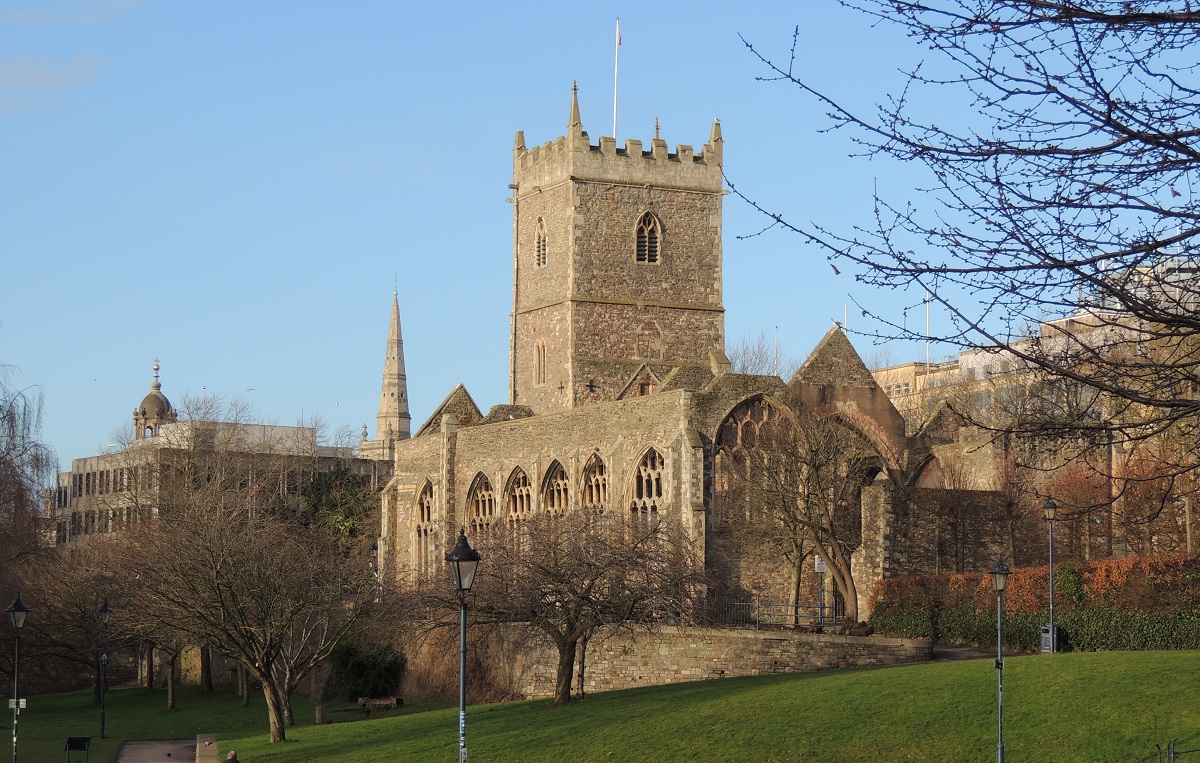
In Castle Park, which lies beautifully along the water, you can see the church ruins of St Peter’s Church. The church was built in the 12th century, which was not long after Bristol Castle, after which the park is named. The original building was changed several times, including in 1657, when the tower took on a castle-like character.
In 1940, the church was bombed, and it now stands as a ruin and monument in memory of those who fell in the English Civil War 1642-1651, where there were battles in the area.
Of Bristol Castle, a few excavated ruins remain in Castle Park. They can be seen northeast of St Peter’s Church. The castle had been destroyed in 1656 and in 1927 the only remaining tower was demolished.
In the 19th century, the engineer Isambard Kingdom Brunel put Bristol on the industrial world map, and this led to significant growth in the city. It brought new business, and from the Victorian town, The Grand hotel stands as one of the fine examples of the architecture of the time. The place is still a hotel, and it has been beautifully renovated and is ready to receive guests in the historic setting that still stands out.
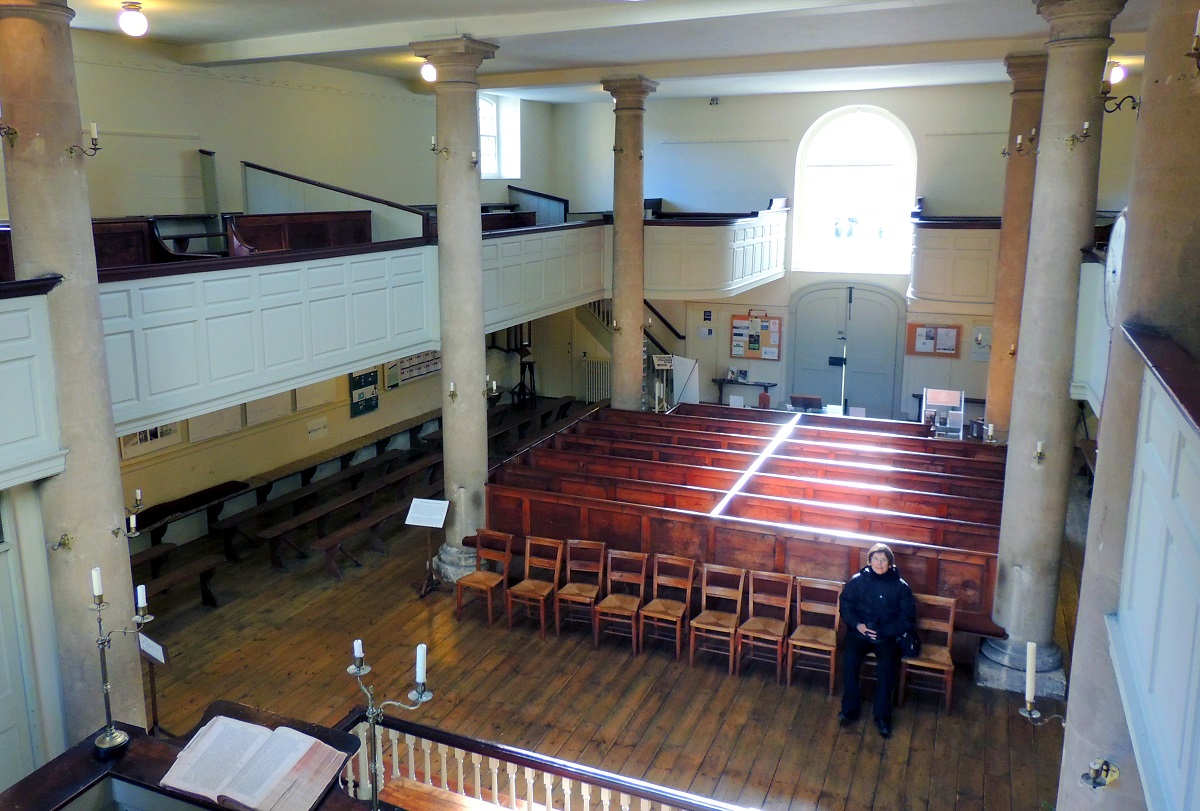
The New Room is the name of the oldest Methodist church in the world. It was built in 1739 by John Wesley, who with his brother Charles formed Protestant Methodism. In front of the church you can see an equestrian statue of John Wesley.
The church stands today as a fine 18th-century room, and on top of the church room itself you can visit John Wesley’s residence, where other of the church’s priests also lived. From the residence you can see the church through the octagonal lantern above the church. This form was often used in contemporary times to reduce the window tax.
The Red Lodge house houses the Red Lodge Museum, which is a gem with its elegantly decorated rooms in Tudor style. It was built in 1580 as an annex to a larger mansion that stood at the present Colston Hall. Later, parts of the house were decorated in the newer Georgian style.
The attractions are the garden and the rooms that tell the history of the house from being built in the Tudor style to later being changed into a Victorian girls’ school. Three rooms are in the Tudor style, three have been converted into Georgian, and then there is a room that tells about the time and the furnishings as a girls’ school. The beautiful garden has been recreated in 17th century style.
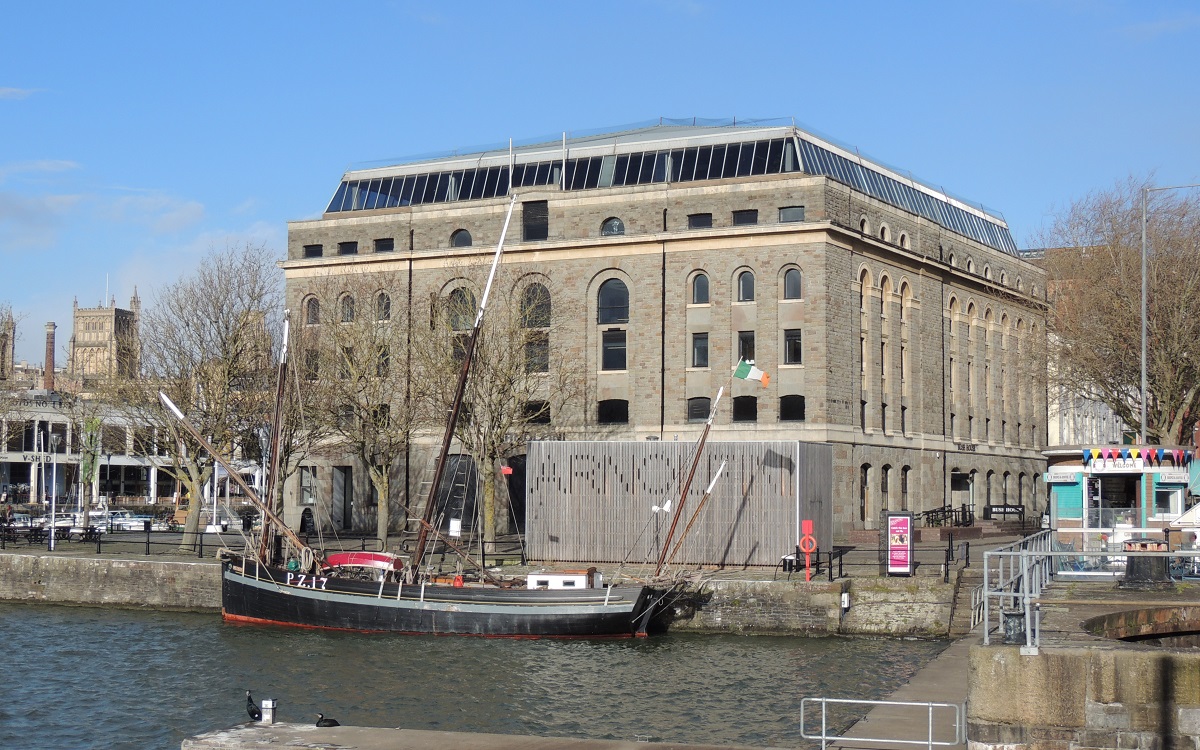
Arnolfini is an art museum where you can see modern art in a number of forms of expression. The museum was founded in 1961 and since 1976 has been housed in the former theme magazine, Bush House, which was built 1831-1836. In front of the museum stands a statue of the Italian explorer Giovanni Caboto, known in England as John Cabot. Caboto became famous when he sailed from Bristol in 1497 and became the first European since the Scandinavian Vikings to set foot on the American mainland.
The name of the museum comes from the painting Arnolfini, which was painted by Jan van Eyck in 1434. The person portrayed is Giovanni Arnolfini, who was a merchant and art patron from the city of Lucca in Italy.
The Cabot Tower is an observation tower built in 1897 to commemorate the 400th anniversary of Italian explorer Giovanni Caboto’s voyage to America in 1497. In England, Caboto is called John Cabot, and he sailed from Bristol on board the ship Matthew on that trip , making him the first European since the Vikings to set foot ashore on the American mainland. Cabot Tower is 32 meters high and built on a hill, which gives a very nice view over the city from here.
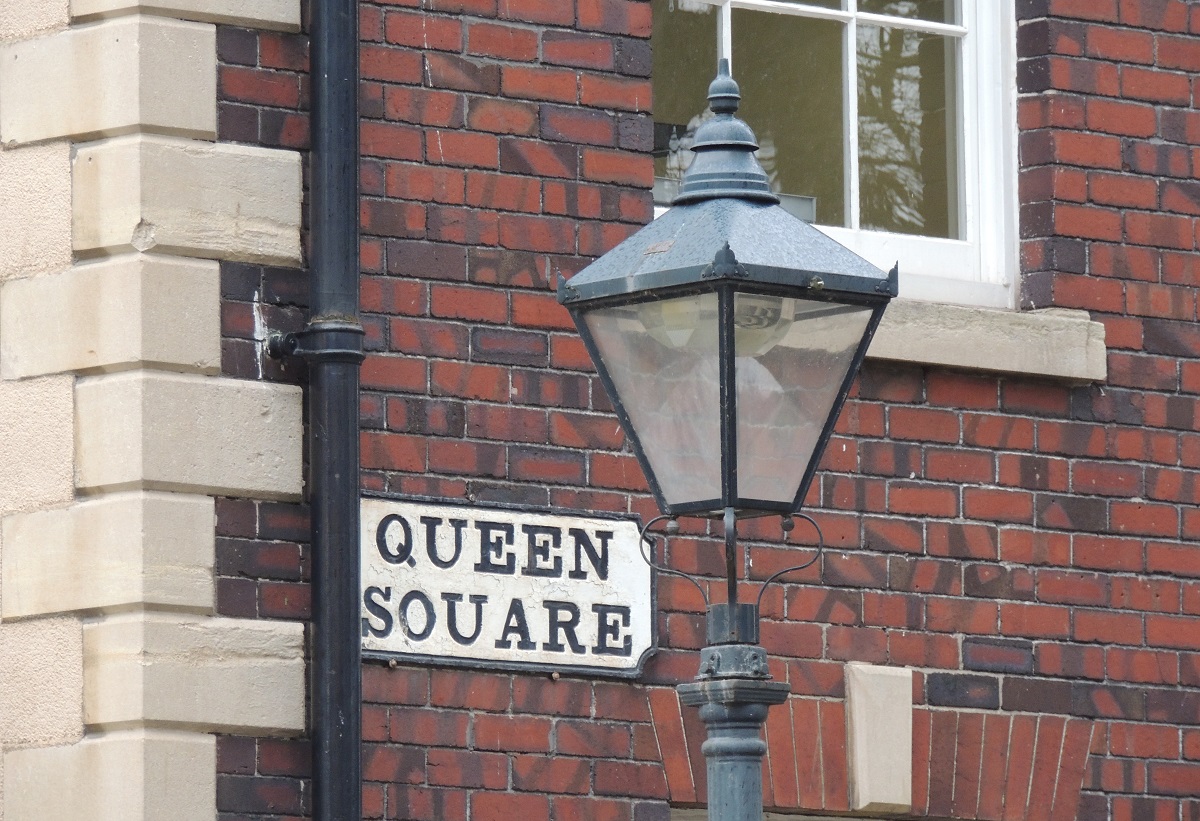
Queen Square is one of Bristol’s elegant squares. It was planned in 1699 and laid out in the period until 1727. In the center of the small park on the square stands an equestrian statue of King Vilhelm III. It was erected in 1736 as a sign of the town’s loyalty to the crown.
On the south side of Queen Square you can see 18th century buildings, and to the east at number 29 you can find the house Sailor’s Refuge, which was built 1709-1711. The original houses to the north and west were destroyed during the so-called Bristol Riots in 1831, and a large part was rebuilt in the following years.
The Georgian House is a fine example of a typical town house in the Georgian style. It was built in the years 1788-1791 and has been used as a museum since 1937. The building contains part of the original furnishings and original furnishings, and it stands as a distinguished example from its time.
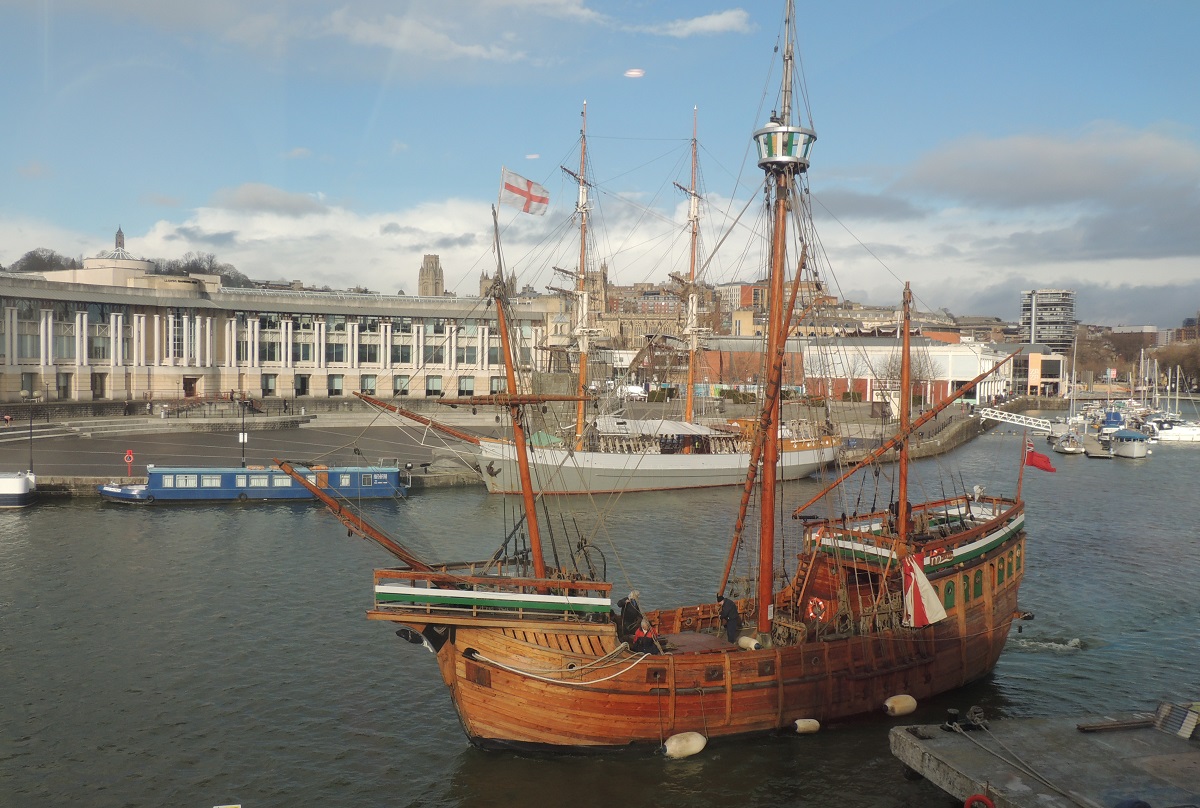
The Matthew is a copy of the ship that Italian Giovanni Caboto used when he set sail from Bristol in 1497 and on the journey became the first European since the Vikings to set foot on the American mainland. It happened when The Matthew reached Newfoundland in present-day Canada.
In the 500th anniversary of Caboto’s voyage, The Matthew sailed on a similar trip with the same crew. They also used the same route and the same time as had happened in 1497. In England, Giovanni Caboto is also known as John Cabot.
Temple Church is a Crusader church founded in the 12th century by Robert, the first Earl of Gloucester. Until the dissolution of the order in the 14th century, the Knights Templar lived here, and the church had a traditional round layout during that period. The church was subsequently rebuilt into an ordinary parish church.
The 35 meter high tower was built in two stages. There was a stoppage in construction due to the tower having acquired an unintended tilt. When it was certain that there was no danger of collapse, it was completed, which happened in 1460. Today, the Temple Church stands as a ruin due to bombing during the Second World War.
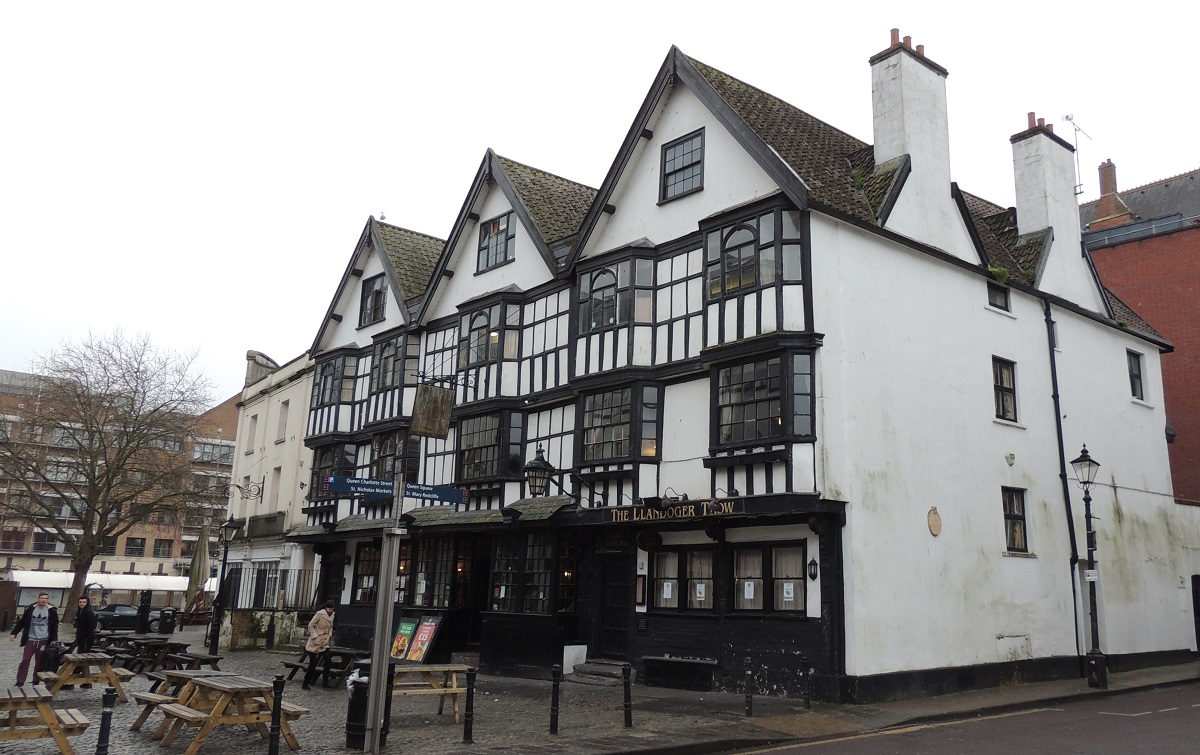
On a stroll down King Street you can see Llandoger Trow, a beautifully preserved row of houses with three gables. The range was built in 1664 and named after a village north of Bristol. During World War II, the building was hit, and two of the five gables were destroyed.
Llandoger Trow has housed several pubs over the years and it is said that Daniel Dafoe and Alexander Selkirk met here. Selkirk’s four years on a deserted island were the inspiration for Dafoe’s later novel about Robinson Crusoe.
St Mary Redcliffe Church is an Anglican parish church located in the Bristol Borough of Redcliffe. It is characterized by its impressive height of 90 metres, which makes it one of England’s tallest parish churches.
The oldest parts of the building date from the 12th century, but the current church is mainly from the 15th century. The spire is from 1872; it was previously destroyed by lightning in 1446. Most of the original interior was destroyed in connection with the 16th century reformation, but new furnishings have been added later. This happened, among other things, during the Baroque and the Victorian era.
Clifton Cathedral is Bristol’s Roman Catholic cathedral. Planning for the building was started in 1965, and after three years of construction, the church was inaugurated in 1973. The architecture is quite unconventional, and an elegant and bright space was created for the 1,000 churchgoers that have room for it.
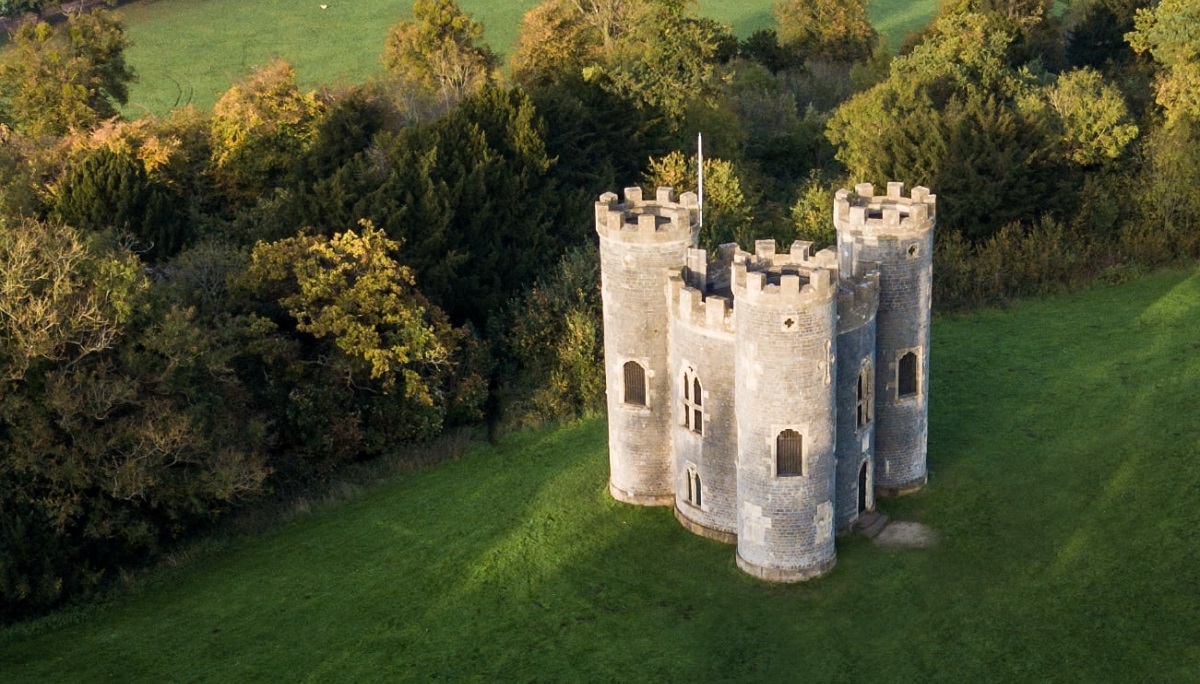
Blaise Castle is a fine 18th-century manor seat that was immortalized by Jane Austen in the novel Northanger Abbey, where she described it as “the finest place in England”. The castle is also very beautifully situated above the Avon Gorge with a view to Avonmouth and to Wales when the weather permits.
Blaise Castle consists of two primary buildings; the castle-like Blaise Castle and Blaise Castle House, which is the place’s residence. Blaise Castle itself was built in 1766, and it is very idyllically located in a forest clearing. Blaise Castle House was built in the years 1796-1798, and it now contains, among other things, a number of works of art from Bristol’s City Museum and Art Gallery. Slotsparken is a beautiful landscape garden that was mainly laid out at the end of the 18th century.
The city of Gloucester is a bishop’s seat close to the border with Wales. It was founded in the year 97 by the Romans with the name Colonia Glevum Nervensis, and it happened during the reign of Emperor Nerva. Later, like others in the area, the city developed to grow due to its location by navigable waters to the world’s oceans, and this still characterizes Gloucester at the pleasant harbor area.
The city’s main attraction is Gloucester Katedral/Gloucester Cathedral, whose history goes back to the founding of an abbey around the year 680. The history of the current building started around the year 1100, and there are several things to see. The fine Gothic interior offers, among other things, glass mosaics from the 14th century, where you can see the earliest reproductions of the game of golf and also another ball game, which may be an early version of football.
The church’s most significant monument is the tombstone of King Edward II, who reigned 1307-1327. Among other burials, the Norman Walter de Lacy can be mentioned. The impressive dimensions of the church are 130 meters in length, 44 meters in width and with the characteristic tower of 69 meters with four spiers as the highest point. More recently, the cathedral has been known as the scene for parts of three Harry Potter films, and connoisseurs of the films may be able to recognize, for example, the cloister corridors.
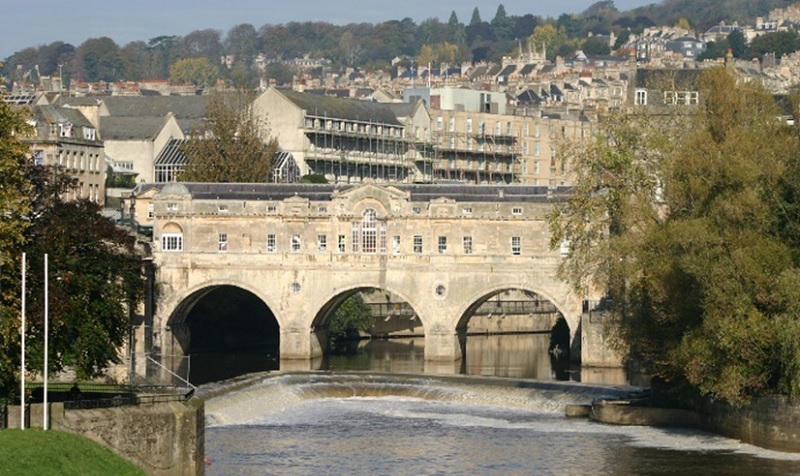
Bath is not one of England’s largest cities, but certainly one of the best known for visitors. The whole city center is like going back to the Georgian time in the 18th century, where architects and builders transformed Bath from a relatively ordinary provincial town into a famous resort.
Bath is home to the only natural hot spring on the British Isles, and they were already appreciated and used in Roman times. Over time, much of the city’s life has been centrered around the spring, and it still is. Today, it is both possible to see the preserved parts of the Roman baths and to take a dip in the warm water in modern spa facilities.
The town of Wells is quite small by English standards, with around 10,000 inhabitants, but it attracts many tourists with its status as an old bishop’s seat. In addition to the well-known sights, the city’s central streets such as Sadler Street, Vicars Close and Market Place are very atmospheric to walk around.
Wells Cathedral is the episcopal seat for the cities and boroughs of Bath and Wells, and the first church on the site dates back to the year 705. The present building was mainly built from around the year 1175 until its consecration in 1239; however, with changes over the following centuries.
The 30 meter high beautiful western facade was completed in 1260, and it is richly decorated with more than 300 preserved figures in various niches. The fine extension Kapitelhuset/Chapter House was completed in 1306. Later in the 13th and 15th centuries, the two towers to the west were added. In the latter half of the 15th century, the building was completed in largely the appearance you can see today.
Internally, Wells Cathedral is three-nave and with a special inward-facing arch construction that was devised to avoid a collapse of the central tower. The stained glass windows in the cathedral are also some of the best preserved from medieval England. The oldest windows date from the 1280s and are the ones immediately to the left of the steps to the Chapter House.
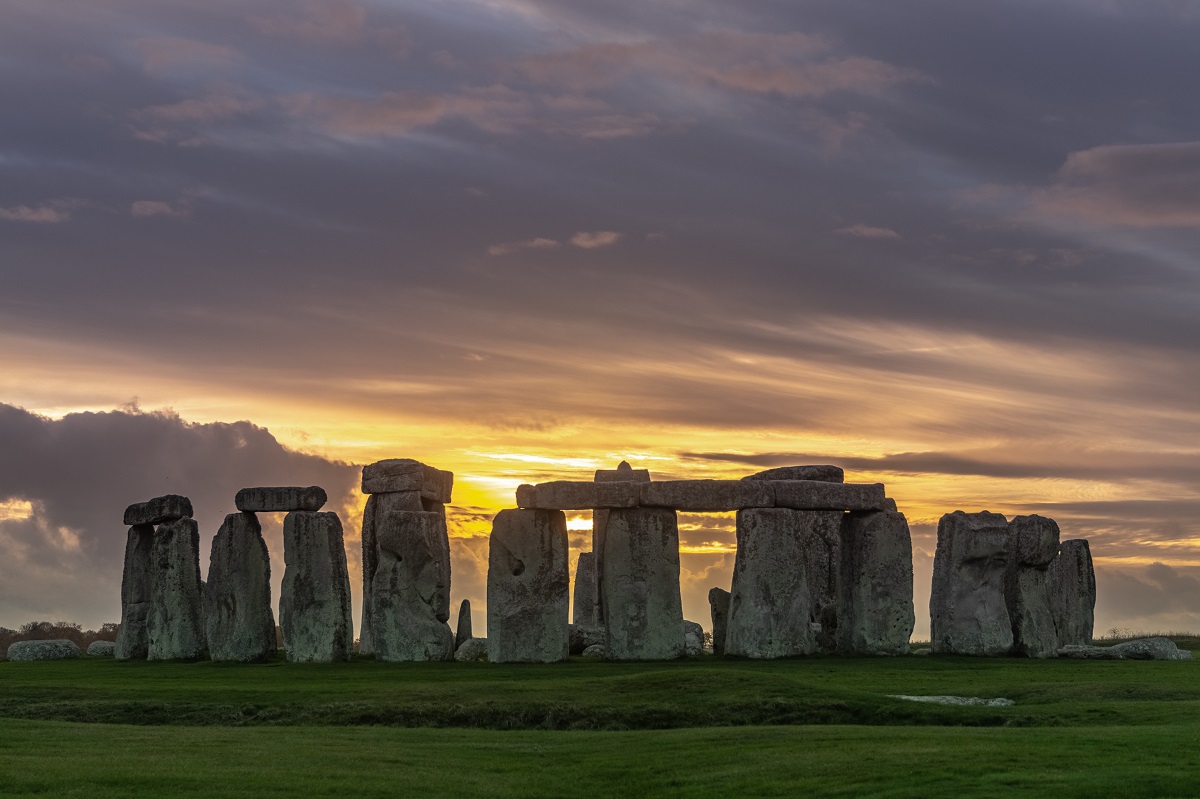
The prehistoric monument Stonehenge with its stone circles has puzzled the modern world for many years. The question is why and how these huge megaliths have been erected here on Salisbury Plains. It is estimated that the ramparts surrounding the facility are from the Neolithic age, around 5,000 years ago, while the stone setting is estimated to be 4,000-4,500 years old, which means from the Bronze Age.
Stonehenge fascinates with its mystery and with what the facility has been used for. There are also several theories about how it was built. The monument forms a large double circle of stones, of which the outer ones are the largest, and they were transported here from several hundred kilometers away. There have been several theories about the use of stone circles like Stonehenge. It is believed that the place has been used as a center for healing, where both patients and experts were attracted.
Cardiff is the capital of Wales and a city grown from large deposits of not least coal and iron. Wales has been a leader in the industrialization of Great Britain, and over time it has created an enormous wealth, which have been turned into a lot of great constructions in the capital city of Cardiff.
Industrial history is largely a thing of the past, and Cardiff has in recent decades undergone a revitalization of the old docks at Cardiff Bay. The modern waterfront area is within walking distance from the old town, and it adds a whole new dimension to the city for locals and visitors alike.
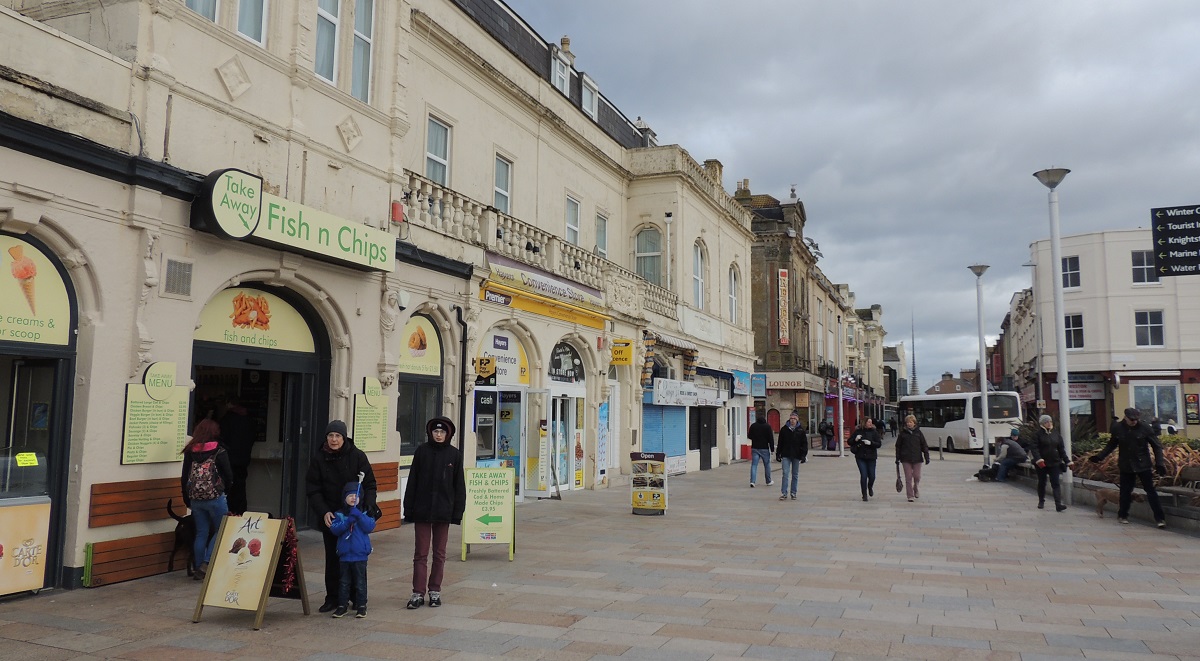
Weston-super-Mare is a popular seaside resort located on the coast of the Bristol Channel. During the season, there are holidaymakers and beachgoers who enjoy the mild climate, sandy beaches and the city’s many activities. The town is beautifully situated, and a highlight is the promenade along the coast. From here you can see the tide that pushes the coastline out about 1.5 kilometers at low tide.
Grand Pier is a fine example of the piers located in several English seaside towns. In Weston-super-Mare, the Grand Pier is just one such facility. The original Grand Pier was built in 1903-1904, and at the end was a large building that housed 2,000 for theatrical performances, concerts and other entertainment.
In 1907 the pier was extended with a jetty 500 yards in length. This had to be able to receive visitors who came by boat from Cardiff. However, the current in the bay was too strong, and this part was torn down again. The Grand Pier burned in 1930, and several new entertainment temples were built in the time until 2008, when the Grand Pier burned again. The current building opened in 2010.
38-46 Broadmead
bhs.co.uk
69 Broadmead
bristolbroadmead.co.uk
Broad Walk, Knowle
broad-walk.co.uk
Glass House
cabotcircus.com
Boyce’s Avenue
cliftonarcade.co.uk
79-82 Broadmead
marksandspencer.com
Broadmead
galleriesbristol.co.uk
25 Union Gallery
themall.co.uk
Broad Street, Corn Street, Small Street, Broadmead, Merchant Street, Union Street, The Horsefair, Penn Street, Old King Street
At-Bristol
Anchor Road
at-bristol.org.uk
Bristol Zoo
Guthrie Road
bristolzoo.org.uk
Bristol Aquarium
Anchor Road
bristolaquarium.co.uk
M Shed
Princes Wharf
bristol.gov.uk/museums
SS Great Britain
Great Western Dockyard, Gasferry Road
ssgreatbritain.org
Bristol Harbor Railway, Princes Wharf
bristol.gov.uk/museums
Seaquarium
Marine Promenade, Weston-super-Mare
seaquarium.co.uk
Founded Bristol originated as a town in the 11th century, then by the name of Brycgstow, which means the place by the bridge. As the name suggests, it was a transitional site and after the actual settlement was established, the castle of Bristol Castle was erected in defense of the area. Already in the 12th century the river Avon was used as a port, and not least the English trade with Ireland went this way.
The city flourished, and production and shipbuilding were some of the things that attracted more and more people to the city. By the middle of the 1300s, Bristol with up to 20,000 inhabitants had become the third largest in the country; only surpassed by London and York.
However, the population decreased, not least with the plague’s intake in 1348-1349. This gave a setback to the development, but the population remained above the 10,000, which was a larger city by the scale of the time.
In 1373, King Edward III announced that the city of Bristol should now and forever be the city of its own region, Bristol County, and it was the first recognition of the city’s status as the center of the South West Anglia.
In 1497, Italian explorer Giovanni Caboto sailed from Bristol to America. Caboto was hired by England and is called here by John Cabot. The journey was to be the first since the Viking era when Europeans set foot on the American mainland. Bristol had England’s second largest port and lay to the west, so it was a natural place to start the trip on the ship Matthew. Cabot is believed to have landed at Cape Bonavista on the island of Newfoundland.
In 1542, Bristol received commercial property rights, and on the same occasion the Abbey Church of St. Augustine exalted to the status of the city’s cathedral. Bristol again saw a growth that lasted for the following centuries, interrupted only by the English Civil War in the mid-17th century, where both fighting and disease broke out.
It was not least the colonial trade that brought growth to England and to Bristol from the 17th and 18th centuries. There was a lot of money in the slave trade, and by the 18th century about 2,000 slave ships were getting ready in Bristol to sail from Africa to North America.
Stopped for slave trade in 1807, war with France and English industrialization, which started in the new industrial cities of central and northern England, gave competition to traditional economic centers such as Bristol, and plans were made for the expansion of the city’s port, so the tide in The Avon River was not an obstacle to constant shipping.
The harbor was built, but in Bristol some industry also grew, and through the 19th century the population exploded from 66,000 in 1801 to more than 300,000 at the turn of the century.
One of the industries that emerged in the 1900s was aircraft production, and because of that, Bristol became a bomb target during World War II.
The industries were of course the specific targets, but also central Bristol around Broadmead and Bristol Castle was heavily bombed, and you can still see preserved ruins from that time.
In the post-World War II era, Bristol has been marked by two things; partly the reconstruction of the city core and partly the relocation of the primary port to the town of Avonmouth at the mouth of the Avon River. The reconstruction of the city center has, among other things, created the Broadmead shopping center, and then preserved the central park where Bristol Castle used to be.
A major change in the city was created with the relocation of the industrial port from the old Floating Harbor in the middle of the city to Avonmouth, located eleven miles along the River Avon to the northwest. The old port areas are now increasingly giving the city a new spirit hole with newly constructed walks and good experiences along the water.
 Bristol, England[/caption]
Bristol, England[/caption]
Overview of Bristol
Bristol has been one of England’s economically and culturally leading cities over the last many centuries and it hosts a number of interesting sights. Not least, the trade along the river has made its mark since industrialization, and the artificially created river port now forms an environment for many cultural activities, promenades and simply boasts a nice atmosphere.
There are several museums in the city. Among them is the great ship SS Great Britain, which was the world’s largest when constructed in 1843. You can also get the story of the English colonial history in the city, which also offers art, entertainment and really good shopping.
About the Whitehorse travel guide
Contents: Tours in the city + tours in the surrounding area
Published: Released soon
Author: Stig Albeck
Publisher: Vamados.com
Language: English
About the travel guide
The Whitehorse travel guide gives you an overview of the sights and activities of the Canadian city. Read about top sights and other sights, and get a tour guide with tour suggestions and detailed descriptions of all the city’s most important churches, monuments, mansions, museums, etc.
Whitehorse is waiting for you, and at vamados.com you can also find cheap flights and great deals on hotels for your trip. You just select your travel dates and then you get flight and accommodation suggestions in and around the city.
Read more about Whitehorse and Canada
Canada Travel Guide: https://vamados.com/canada
City tourism: https://visitwhite-horse.ca
Main Page: https://www.vamados.com/
Buy the travel guide
Click the “Add to Cart” button to purchase the travel guide. After that you will come to the payment, where you enter the purchase and payment information. Upon payment of the travel guide, you will immediately receive a receipt with a link to download your purchase. You can download the travel guide immediately or use the download link in the email later.
Use the travel guide
When you buy the travel guide to Whitehorse you get the book online so you can have it on your phone, tablet or computer – and of course you can choose to print it. Use the maps and tour suggestions and you will have a good and content-rich journey.


In Castle Park, which lies beautifully along the water, you can see the church ruins of St Peter’s Church. The church was built in the 12th century, which was not long after Bristol Castle, after which the park is named. The original building was changed several times, including in 1657, when the tower took on a castle-like character.
In 1940, the church was bombed, and it now stands as a ruin and monument in memory of those who fell in the English Civil War 1642-1651, where there were battles in the area.
Of Bristol Castle, a few excavated ruins remain in Castle Park. They can be seen northeast of St Peter’s Church. The castle had been destroyed in 1656 and in 1927 the only remaining tower was demolished.
In the 19th century, the engineer Isambard Kingdom Brunel put Bristol on the industrial world map, and this led to significant growth in the city. It brought new business, and from the Victorian town, The Grand hotel stands as one of the fine examples of the architecture of the time. The place is still a hotel, and it has been beautifully renovated and is ready to receive guests in the historic setting that still stands out.

The New Room is the name of the oldest Methodist church in the world. It was built in 1739 by John Wesley, who with his brother Charles formed Protestant Methodism. In front of the church you can see an equestrian statue of John Wesley.
The church stands today as a fine 18th-century room, and on top of the church room itself you can visit John Wesley’s residence, where other of the church’s priests also lived. From the residence you can see the church through the octagonal lantern above the church. This form was often used in contemporary times to reduce the window tax.
The Red Lodge house houses the Red Lodge Museum, which is a gem with its elegantly decorated rooms in Tudor style. It was built in 1580 as an annex to a larger mansion that stood at the present Colston Hall. Later, parts of the house were decorated in the newer Georgian style.
The attractions are the garden and the rooms that tell the history of the house from being built in the Tudor style to later being changed into a Victorian girls’ school. Three rooms are in the Tudor style, three have been converted into Georgian, and then there is a room that tells about the time and the furnishings as a girls’ school. The beautiful garden has been recreated in 17th century style.

Arnolfini is an art museum where you can see modern art in a number of forms of expression. The museum was founded in 1961 and since 1976 has been housed in the former theme magazine, Bush House, which was built 1831-1836. In front of the museum stands a statue of the Italian explorer Giovanni Caboto, known in England as John Cabot. Caboto became famous when he sailed from Bristol in 1497 and became the first European since the Scandinavian Vikings to set foot on the American mainland.
The name of the museum comes from the painting Arnolfini, which was painted by Jan van Eyck in 1434. The person portrayed is Giovanni Arnolfini, who was a merchant and art patron from the city of Lucca in Italy.
The Cabot Tower is an observation tower built in 1897 to commemorate the 400th anniversary of Italian explorer Giovanni Caboto’s voyage to America in 1497. In England, Caboto is called John Cabot, and he sailed from Bristol on board the ship Matthew on that trip , making him the first European since the Vikings to set foot ashore on the American mainland. Cabot Tower is 32 meters high and built on a hill, which gives a very nice view over the city from here.

Queen Square is one of Bristol’s elegant squares. It was planned in 1699 and laid out in the period until 1727. In the center of the small park on the square stands an equestrian statue of King Vilhelm III. It was erected in 1736 as a sign of the town’s loyalty to the crown.
On the south side of Queen Square you can see 18th century buildings, and to the east at number 29 you can find the house Sailor’s Refuge, which was built 1709-1711. The original houses to the north and west were destroyed during the so-called Bristol Riots in 1831, and a large part was rebuilt in the following years.
The Georgian House is a fine example of a typical town house in the Georgian style. It was built in the years 1788-1791 and has been used as a museum since 1937. The building contains part of the original furnishings and original furnishings, and it stands as a distinguished example from its time.

The Matthew is a copy of the ship that Italian Giovanni Caboto used when he set sail from Bristol in 1497 and on the journey became the first European since the Vikings to set foot on the American mainland. It happened when The Matthew reached Newfoundland in present-day Canada.
In the 500th anniversary of Caboto’s voyage, The Matthew sailed on a similar trip with the same crew. They also used the same route and the same time as had happened in 1497. In England, Giovanni Caboto is also known as John Cabot.
Temple Church is a Crusader church founded in the 12th century by Robert, the first Earl of Gloucester. Until the dissolution of the order in the 14th century, the Knights Templar lived here, and the church had a traditional round layout during that period. The church was subsequently rebuilt into an ordinary parish church.
The 35 meter high tower was built in two stages. There was a stoppage in construction due to the tower having acquired an unintended tilt. When it was certain that there was no danger of collapse, it was completed, which happened in 1460. Today, the Temple Church stands as a ruin due to bombing during the Second World War.

On a stroll down King Street you can see Llandoger Trow, a beautifully preserved row of houses with three gables. The range was built in 1664 and named after a village north of Bristol. During World War II, the building was hit, and two of the five gables were destroyed.
Llandoger Trow has housed several pubs over the years and it is said that Daniel Dafoe and Alexander Selkirk met here. Selkirk’s four years on a deserted island were the inspiration for Dafoe’s later novel about Robinson Crusoe.
St Mary Redcliffe Church is an Anglican parish church located in the Bristol Borough of Redcliffe. It is characterized by its impressive height of 90 metres, which makes it one of England’s tallest parish churches.
The oldest parts of the building date from the 12th century, but the current church is mainly from the 15th century. The spire is from 1872; it was previously destroyed by lightning in 1446. Most of the original interior was destroyed in connection with the 16th century reformation, but new furnishings have been added later. This happened, among other things, during the Baroque and the Victorian era.
Clifton Cathedral is Bristol’s Roman Catholic cathedral. Planning for the building was started in 1965, and after three years of construction, the church was inaugurated in 1973. The architecture is quite unconventional, and an elegant and bright space was created for the 1,000 churchgoers that have room for it.
Similar to Bristol Travel Guide
